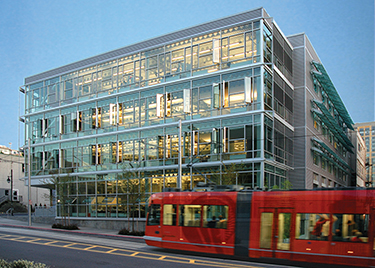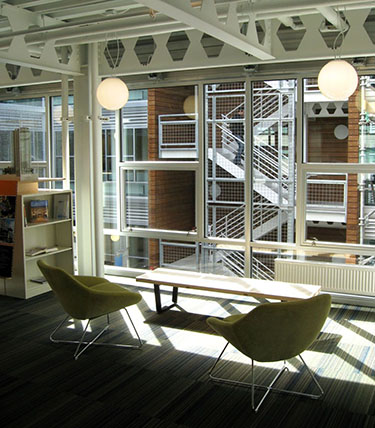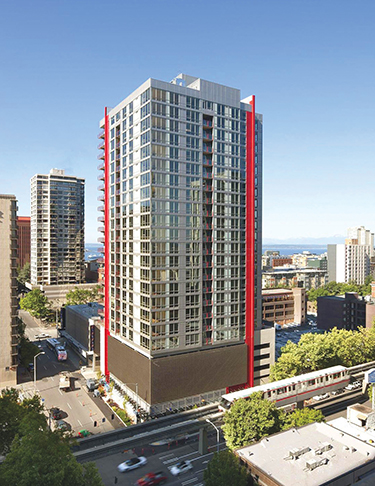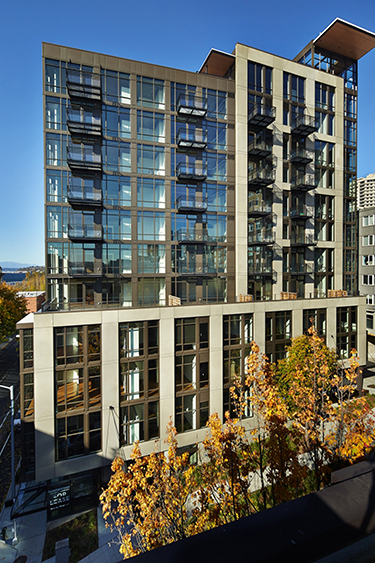|
Subscribe / Renew |
|
|
Contact Us |
|
| ► Subscribe to our Free Weekly Newsletter | |
| home | Welcome, sign in or click here to subscribe. | login |
Environment
| |
 |
February 26, 2015
How do you measure the value of a green building?
Weber Thompson

Harrell
|
The Joseph Arnold Lofts sold in last May, setting a regional record for price per square foot. In October, The Martin apartments sold for a record price per unit. In December, Stone34 went for $70.1 million.
There is something missing from these headlines and those of many other recent property sales.
The Martin is a LEED gold building. The Joseph Arnold Lofts is Green Globes certified. Stone34 participated in Seattle’s Deep Green Pilot Program, designed to aggressively reduce energy and water use.
The question is, what was the impact of sustainability on these record sale prices, and how do we measure this impact so we can replicate it?
Design interventions around site, water, energy, materials and indoor environment have made many buildings more durable, efficient and healthy. They are better buildings in many ways for tenants, owners and investors. But there isn’t a reliable way to quantify how much better, and what specific financial value sustainable features add.
Certification is one approach to making a case for green, and perhaps the best place to start comparing properties.
According to CoStar’s summary of their often-cited 2008 study “Commercial Real Estate and the Environment,” LEED buildings showed rent premiums of $11.33 per square foot over non-LEED buildings and have 4.1 percent higher occupancy. Rental rates in Energy Star buildings represented a $2.40 per square foot premium over comparable non-Energy Star buildings and had 3.6 percent higher occupancy. Energy Star buildings sold an average $61 per square foot higher, while LEED buildings demanded $171 more per square foot.
While not necessarily showing causation from green building to value, the above nationwide statistics are impressive and difficult to ignore.
In Seattle, we have a unique challenge with these certifications. Our aggressive local energy code means new code-compliant buildings often automatically qualify for base-level certifications, making these certifications less of a market differentiator.
Measuring value
A 2013 guide by the Appraisal Institute and the Institute for Market Transformation presents a framework for the economic value of green buildings using four components: revenue, operating expenses, occupancy, and risk. (The publication is available online at bit.ly/1AgkFmA.)
These components translate the “softer” aspects of green buildings into more substantial metrics like rent premiums, increased tenant retention, lower vacancy, higher-quality tenants, quicker absorption, operational savings and market advantage. A building developer or owner can use these to understand how a building’s green aspects impact value — this approach has been long overlooked.
Revenue and operating expenses are direct and obvious components. A careful tracking of more efficient utilities, such as electricity and water, can translate into lowered operating expenses for a long-term building owner.
But it is unclear whether an owner’s promise of lower utility bills for tenants yields higher rents. So we have what is known as the “split incentive”: less inclination to favor operational performance in design, resulting in less tangible impact of green features to net operating income — a key factor determining a building’s total value.
Occupancy and risk are two components also readily understood in our market. Intuitively, a green building — such as one with abundant daylight, reducing the need for artificial lighting — will attract higher-quality tenants and longer, more favorable leases. In the long term this means the building can mitigate changes in consumer preferences, new laws, utility prices and economic downturns — therefore mitigating risk.
This happened with The Terry Thomas office building in South Lake Union. The 40,000-square-foot building, which relies on natural ventilation, cooling and daylighting, weathered the storm of commercial vacancy rates many office buildings experienced in 2010-2012 as it remained fully occupied.
The monetary value is there. The quality of the space contributed to attract tenants. The difficult part is extracting the value specific to green measures from other complex factors.
There is much to be done to establish the dollars-per-square-foot value of sustainable strategies in buildings. If done well, these strategies could alter the development landscape, reshaping goals set early in project formation.
Share the data
When we talk about “the business case for green” to our clients, partners, investors and lenders, we must resist being complacent with vague descriptions of green marketability and the triple bottom line. While valid and essential aspects to the green building movement, these arguments fall short when the tools and data are at hand to present a more specific and impactful business case for green: dollars per square foot of asset value.
Once we can articulate this value proposition, we streamline the course to the broader ambitions that can currently seem out of reach: standard carbon-neutral new construction in 2030 (The 2030 Challenge), or carbon-neutral municipalities by 2050 (Seattle’s 2013 Climate Action Plan).
At the outset of projects, we must recognize how sustainability measures directly impact a project’s pro forma. The hard data needs to form cohesive arguments for reducing expenses, increasing revenue and otherwise adding value in buildings. When we succeed in this effort, we must share our data to better inform the marketplace and make it easier for the next project team to make similar arguments.
The goal is to promote “green,” not just as good marketing, or even because it’s the right thing to do, but because it makes good financial sense.
Myer Harrell is director of sustainability and a senior associate at Weber Thompson, a Seattle-based architecture, interior design, landscape architecture, and community design firm. He was named the AIA Seattle Young Architect in 2011, and is a former board member for the Cascadia Green Building Council.
Other Stories:
- Energy tools that could change the game
- Why green building has hit the wall, and what to do about it
- How to make a better business case for going green
- Making the most of your energy model
- Seattle is clamping down on waste from construction and demolition
- How to treat stormwater in urban areas — like Totem Lake
- Goal of Capitol Hill EcoDistrict is to make neighborhood green
- How to convince a realist it makes sense to go green
- Six reasons developers should build net-zero apartments
- Federal Center South team focused on results, not ratings






